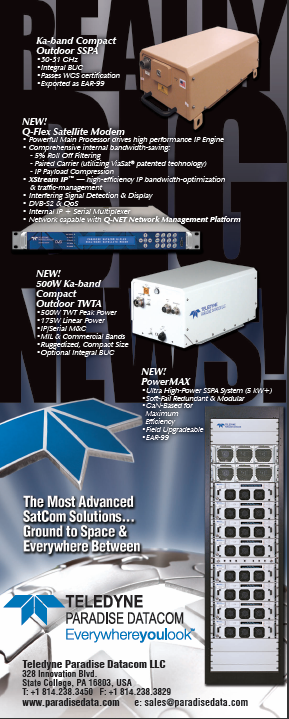At the time of writing, it is predicted that we will see 192 spacecraft launched with 81 launches. As to their purpose, the following table provides a break-up.
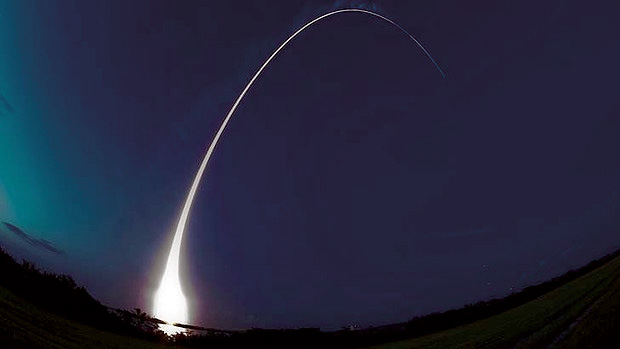
The launch of the WGS-6 satellite via an United Launch Alliance Delta IV launch vehicle from the Cape Canaveral Air Force Station.
Three launch vehicles, including one from Iran, failed to place their payloads in orbit.
This total of 189 is the highest ever attained for a single year since spaceflight began in 1957. This high number is particularly attributable to about 75 so-called cubesats that have been (or are still to be) launched during the year. This increase in the number of cubesats is a manifestation of the miniaturization of electronic equipment and the affordability of the cubesat concept to small operators and educational institutions. This is a trend that, beyond a doubt, will continue into the future.
One of the initiatives during the year was the increased interest in the management of asteroids and other objects in space that pose a potential threat to Earth. Clearly, these initiatives were driven by the meteorite explosion that occurred over Russia in February of 2013. As a result, Russia wants to place beacon transmitters on asteroids, in particular on the asteroid Apophis that is expected to travel close to Earth in 2036.
At about the same time, Professor Scott Hubbard at Stanford University appreciated that it may not be easy to keep track of all of the asteroids that travel around the solar system, as most of them consist of black carbon that blend with the black background of space, making it quite impossible to see them. He also estimated there are a million of these asteroids that are longer than 100m in the solar system although, he admitted, most of them spend most of their time far away from Earth.
He has proposed a program to track down the hundreds of thousands of unknown asteroids that could pose a threat to Earth. Once an asteroid has been detected, calculations can be made to determine where the asteroid will be 50 to 100 years from now and attempts can be made to alter the asteroid’s orbit.
In April 2013, NASA outlined its proposed asteroid retrieval mission—a small asteroid would be captured by a robotic spacecraft and towed back to Earth’s vicinity so that crews could visit it to learn more about the threat asteroids pose, the resources they represent, and to help perfect the technology needed for eventual flights to Mars. Such would involve a 7m, 500 ton asteroid and, according to Aviation Week & Space Technology, NASA’s budget request for 2014 would include $100 million to get the project underway. The captured asteroid would be placed at the second Earth-Moon Lagrangian Point (EML2), above the Moon’s far side. The program envisages a test flight in 2017 followed by a rendezvous and capture mission in 2019. The asteroid would then be hauled back to cislunar space by around 2021.
China is gradually making its mark as a leading force in the commercial space market for developing nations by entering into deals for communications satellites for Sri Lanka, Turkey, Congo, Belarus, Laos, Nigeria, Pakistan and Venezuela. These contracts are for the satellite itself as well as launch services. Recently, there was also an indication that China would be willing to train foreign astronauts and send them to its proposed Tiangong space station.
Considering this trend, it is perhaps wise for the partners in the International Space Station to reconsider the possible participation of China in that program, especially with respect to access to the space station. With the Space Shuttle now firmly grounded and a future US crewed spacecraft still a long way in the future, the scenario should be contemplated where, for whatever reason, the Soyuz TMA spacecraft is grounded, either due to problems with the spacecraft itself or with the launch vehicle.
A Shenzhou spacecraft fitted with an appropriate docking module would be able to help out—this would, of course, only work if the Chinese have regular access to ISS. This need not be every three months—it could be a once a year exercise, just like the Japanese HTV contribution and ESA’s ATVs. This could perhaps be a preamble to allowing the proposed Chinese space station to dock with ISS.
However, the likelihood that this could happen seems to be remote with the ‘them-and-us’ attitude that seems to be prevailing, not only in the United States, but also in Russia. Such an attitude does not serve anybody except the politicians who advocate such policies. This attitude will encourage the same distrust between the major powers as was experienced during the Cold War and the resulting ‘space race.’ Space should not be seen as a ‘race course,’ but rather an area where global trust between nations is encouraged.
In the United States, the political stand-off between President Obama’s administration and a hostile Congress has resulted in the budget sequestration process that has set a hard cap on the amount of government spending within broadly defined categories of spending. This was topped on October 1, 2013, by a total shutdown of government operations for 16 days.
In the case of NASA it has been reported that its overall budget has dropped to $16.9 billion, down from the $17.8 billion approved last year. This has forced NASA to slow down the development work on its commercially operated ferry flights in support of the International Space Station, while space technology programs have been delayed or cancelled and the launch of some small science missions are being postponed.
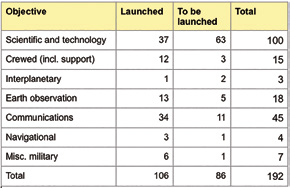
The head of US Air Force Space Command has warned that the on-going budget sequestration in the United States “will prove more devastating to US space capabilities than any threat an adversary could think up.” He stated that if there is no budget flexibility soon, the impact on post-Afghanistan operations of missile warning, meteorological and navigation satellites, which are considered “must haves” for military operations, may be in danger.
As an outsider (the author is not a US citizen), the sequestration process and the16 days shutdown appears to be nothing more than an exercise in childish one-upmanship to suit irresponsible behavior of political opponents rather than the welfare of the country. The process does not just impact on the agencies and programs directly concerned with the programs, but also have a ripple effect through the industrial and scientific community and beyond. These cuts will certainly have a long term effect. Also, the process ignores money that has already spent on some of the programs that have now been cancelled—talk about waste.
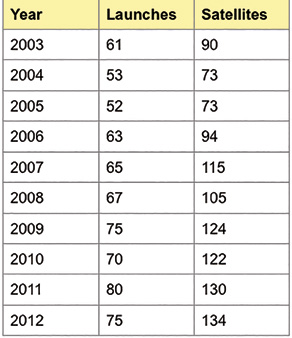
The year also saw some interesting developments in the official approach to space by Russia. These started with the failure of a Proton M/Briz M launch vehicle on July 2, 2013, which was the third failure of this launch vehicle in the past few years. Although the cause of this failure was investigated quickly and the use of the launch vehicle was resumed in September of 2013 without too much of an impact on the scheduled launches. However, the Russian Prime Minister replaced the head of the Russian space agency, Roscosmos, in October 2013 as he had failed to turn around the Russian space industry that has been plagued by launch failures and other aspects of mismanagement.
At about the same time, it was reported that the Russian government intends to reorganize the space industry to counteract inefficiencies and the misuse of funds. In this plan a new state corporation will take over all manufacturing facilities, which are currently under the control of Roscosmos and are grouped into 10 integrated structures. The new corporation will introduce a unified technical policy and save financial resources by consolidating developers and manufacturers. This plan is also intended to diminish the reliance on imported components and, instead, focus on domestic production. In the new arrangement, Roscosmos will act as an executive body and contracting authority for programs to be implemented by the industry.
Then there was the reversal of the Dnepr 1 launch program, which had been suspended in 2011 as too costly. However, at that time a number of satellites had been scheduled for two launches—the South Korean Arirang-5 and a batch of satellites for Saudi Arabia and several other countries. In May 2013, the Russian and Ukrainian governments decided to manage these two launches. Reading between the lines, it is possible that these unusual actions were driven by the Russian desire to be seen as a reliable launch partner in the international market.
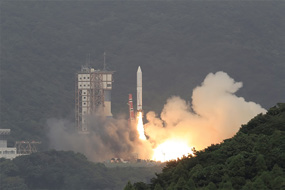
Japan’s Epsilon launches. Photo courtesy of JAXA.
It was good to note the introduction of Japan’s new Epsilon launch vehicle while the Antares launch vehicle was resurrected. In addition, the SpaceX Falcon 9 launch vehicle gained operational status.
The year also brought a proliferation of satellites of a military nature. The USA and Russia, as well as the United Kingdom, France and China, as well as countries such as Germany, Japan, Brazil and India, now also have military satellites, or are considering them. To this, add the multinational character the USA’s Wideband Global Satcom (WGS) system is moving toward with the participation of Australia, The Netherlands, France, Canada, Denmark and New Zealand in the mission.
The year also saw the addition of Azerbaijan, Austria, Ecuador, Estonia and Peru to the list of nations that possess satellites in orbit. Whether Sri Lanka should be added due to that nation’s claims of owned transponders on a Chinese satellite to this list is somewhat debatable.
Meanwhile North Korea and Iran are continuing their space programs, which seem to serve domestic PR as well as military operations.
That was 2013, the 57th year in space. As for 2014, please return one year from now for an update on what could be another historic year for the industry.

About the author
Jos Heyman is the Managing Director of Tiros Space Information, a Western Australian consultancy specializing in the dissemination of information on the scientific exploration and commercial application of space for use by educational as well as commercial organisations. An accountant by profession, Jos is the editor of the TSI News Bulletin and is also a regular contributor to the British Interplanetary Society’s Spaceflight journal. Jos is also a Senior Contributor for SatMagazine.


